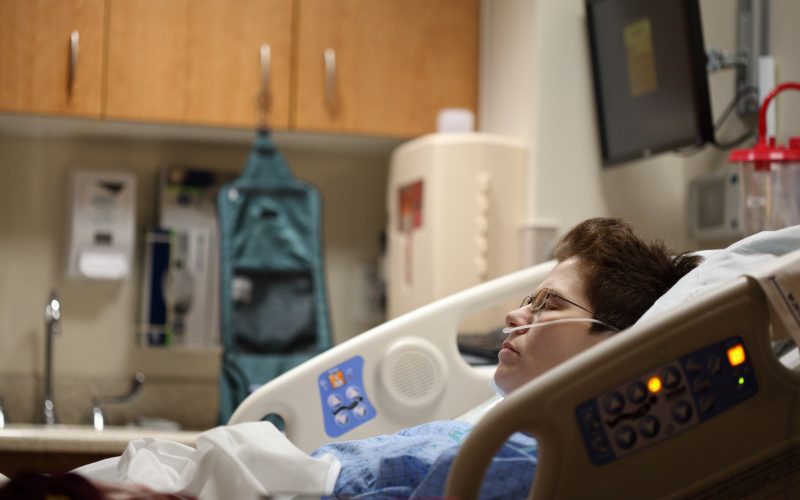As technology continues to advance, more and more industries are embracing automation as a way to streamline processes and increase efficiency. The medical field is no exception, and the benefits of automated medical processes extend far beyond just making doctors’ lives easier. One crucial aspect that can be improved with automation is patient safety. By prioritizing patient safety through automated medical processes, healthcare providers can provide better care while reducing human error – a win-win for both patients and their caregivers. In this blog post, we’ll explore some of the key benefits of implementing automated medical processes in healthcare settings and how they can help ensure that patients receive the best possible care.
What is patient safety?
Patient safety is a top priority for healthcare providers. Automating medical processes can help improve patient safety by reducing errors and increasing efficiency.
One way that automating medical processes can improve patient safety is by reducing the chance for human error. For example, automating medication administration can help reduce the chance of errors such as wrong doses or incorrect medications being given to patients.
Another way that automated medical processes can improve patient safety is by increasing efficiency. When processes are automated, tasks can be completed more quickly and accurately. This can free up time for healthcare providers to focus on other important tasks, such as providing more direct patient care.
Overall, automating medical processes can have many benefits for both healthcare providers and patients. By reducing errors and increasing efficiency, automated processes can help improve patient safety in a variety of ways.
The benefits of automated medical processes
There are many benefits of automated medical processes, but patient safety is always the top priority. By automating certain processes, we can help to ensure that patients receive the best possible care and that their privacy is protected.
Some of the benefits of automated medical processes include:
1) Reduced errors: Automated processes can help to reduce the number of errors made by medical staff. This can help to improve patient safety and care.
2) Improved efficiency: Automated processes can help to increase efficiency in the delivery of care. This can free up time for medical staff to focus on other tasks, such as providing more personalised care to patients.
3) Enhanced privacy: Automated processes can help to protect patient privacy by ensuring that confidential information is only accessed by authorised personnel. This can help to put patients at ease and improve their experience of healthcare.
How automated medical processes improve patient safety
Patient safety is always the top priority for healthcare providers. Automated medical processes can help improve patient safety in a number of ways.
One way that automated medical processes can improve patient safety is by reducing the potential for errors. For example, automated medication dispensing systems can help reduce the risk of medication errors by ensuring that the correct medication is dispensed to the correct patient.
Another way that automated medical processes can improve patient safety is by reducing the need for human intervention. For example, an automated blood pressure monitoring system can continuously monitor a patient’s blood pressure and alert nurses if any changes occur, eliminating the need for a nurse to manually check a patient’s blood pressure every few hours.
Automated medical processes can also help improve patient safety by providing real-time data that can be used to make decisions about patient care. For example, an automated vital signs monitoring system can provide real-time data about a patient’s heart rate, blood pressure, and respiratory rate, which can be used to make decisions about whether or not to administer medication or other treatments.
In summary, automated medical processes can help improve patient safety in a number of ways by reducing the potential for errors, reducing the need for human intervention, and providing real-time data that can be used to make decisions about patient care.
Case studies of automated medical processes in action
When it comes to patient safety, there is no such thing as too much automation. Every year, there are countless stories of medical errors that occur due to human error. Automated medical processes can help to eliminate these errors and improve patient safety.
One example of an automated process that is improving patient safety is the use of electronic health records (EHRs). EHRs help to ensure that all of a patient’s pertinent medical information is readily available and up-to-date. This can prevent medication errors, as well as provide a more complete picture of a patient’s health history.
Another example of an automated process that is benefiting patients is the use of computerized physician order entry (CPOE). CPOE systems help to reduce the likelihood of errors when prescribing medications. The systems do this by checking for drug interactions and allergies, as well as ensuring that the correct dose is ordered.
These are just two examples of how automated medical processes are making a positive impact on patient safety. As more and more processes are automated, we can expect to see even greater improvements in patient care.
Implementing automated medical processes in your facility
When it comes to patient safety, there are few things more important than ensuring that all medical processes are carried out effectively and efficiently. This is where automated medical processes can play a vital role. By automating certain key processes, you can free up staff time to focus on other areas, while also reducing the potential for human error.
One of the most important benefits of automated medical processes is that they can help to improve communication between different departments within your facility. By automating key processes, you can ensure that everyone is working from the same set of information and that any changes or updates are quickly relayed to all relevant parties. This helps to avoid confusion and ensures that everyone is always on the same page.
In addition to improving communication, automated medical processes can also help to save time and money. Automating repetitive tasks can help to speed up processes and free up staff time to focus on more complex tasks. Additionally, automating certain tasks can help to reduce the need for manual input and data entry, which can lead to errors and inaccurate information.
If you’re looking for ways to improve patient safety at your facility, implementing automated medical processes is a great place to start.
Conclusion
Automated medical processes offer many benefits to prioritize patient safety and reduce the risk of errors that can cause harm. These automated systems are designed to be efficient, cost-effective, and accurate while also giving healthcare staff more time to focus on patient care. By using these automated methods, healthcare institutions can ensure that their patients receive the highest quality of care with minimal risks involved. Automation has become an essential part of modern medicine and is only set to become even more important in the future as technology advances further.












